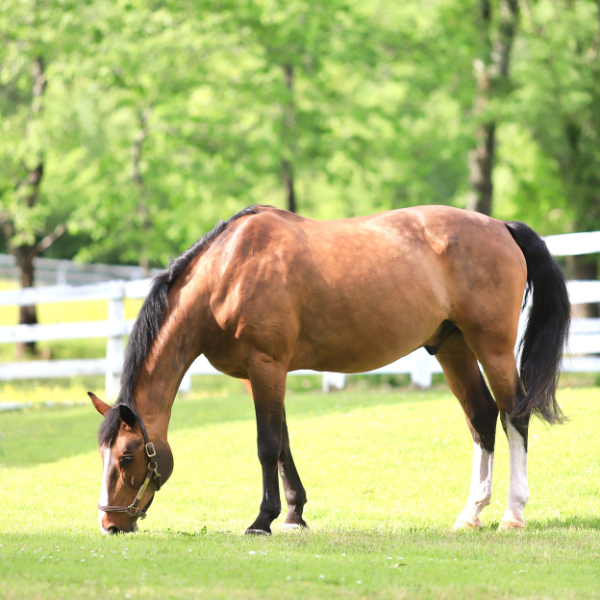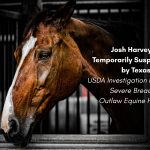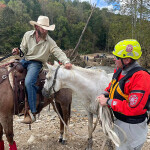Congratulations, Mid-South horse enthusiasts, we’ve officially made it through winter! As we ease into spring there are many changes to be made in and around the barn: pasture management, turn out time, more riding and training, and so on. However, one change that may not be on the forefront of our minds is seasonal diet changes in our equines.
For those horse owners with senior horses or equines who struggle to maintain weight throughout winter, the lush, spring grass is a welcome sight; however, “owners of easy keepers and horses with endocrine conditions such as PPID (Cushing’s) and EMS (Equine Metabolic Syndrome) may not be so happy to see” spring pastures, according to Catherine Whitehouse, MS, Nutrition Advisor at Kentucky Equine Research (KER). Horses with these metabolic conditions may require diet changes as we transition into spring, such as pasture restriction, use of a grazing muzzle, and specific turn out times.
If not closely monitored, pasture grazing can quickly lead to laminitis in at-risk equines, such as those with insulin dysregulation and easy keepers. “Rapidly growing pastures [contain] significant amounts of nonstructural carbohydrates (NSC),” according to Catherine. These NSC combined with the equine’s natural propensity to take in high levels of forage can lead to obesity and laminitis. Increased circulating insulin levels are yet another negative effect. To combat these undesirable conditions in your equine, Catherine recommends “restricting access to pasture with grass-free turnouts (dry lots or track systems) that still allow movement, or the use of grazing muzzles to help slow the rate of [pasture] intake.” It is important to note that although a great tool, a grazing muzzle does make it difficult to account for the precise amount of forage your equine is actually taking in. Turn out time between 12AM-10AM, when the grass is lowest in sugar content, is another way to manage intake in horses with metabolic conditions.
What about those equines who are kept on a dry lot or small pasture through the winter and those who are mostly kept stalled? These horses will require different management styles when it comes to spring grazing. Catherine recommends reintroducing them to any spring pasture gradually “ to allow the microbial population in the hindgut to adapt to the diet changes, predominantly the rapidly fermentable fiber and higher NSC content.” Gas, loose stool, and colic episodes are signs of overgrazing to watch out for when putting these horses on pasture this spring. Feeding hay before turning out horses who are not used to being on pasture continuously is another way to slow the rate of intake, according to Catherine.
Even horses in regular training programs are at risk for weight gain when mostly on rapidly-growing, spring pasture for most of the day. The fresh, green spring grass is highly- palatable, and, therefore, irresistible to most equines, so careful monitoring and management of pasture intake is paramount in preventing undesirable insulin levels, obesity, and laminitis- even in healthy equine populations.
Another seasonal diet change to consider this spring is the use of supplements. Catherine suggests those horses whose forage intake comes from mostly hay may be good candidates for vitamin E supplementation. This fat-soluble vitamin is an important antioxidant for horses. It helps maintain a healthy immune system and supports nerve and muscle function as well. Naturally found in fresh, green grasses, your horse will not require additional vitamin E if on good quality pasture for at least 8 hours a day. As always, free-choice salt should be available this spring as well, but Catherine states, “Horses grazing on lush pastures may benefit from salt top-dressed onto their feed to ensure adequate sodium intake and maintain optimal water intake, as it is not uncommon for horses to decrease voluntary water intake due to the high water content of lush pastures.”










